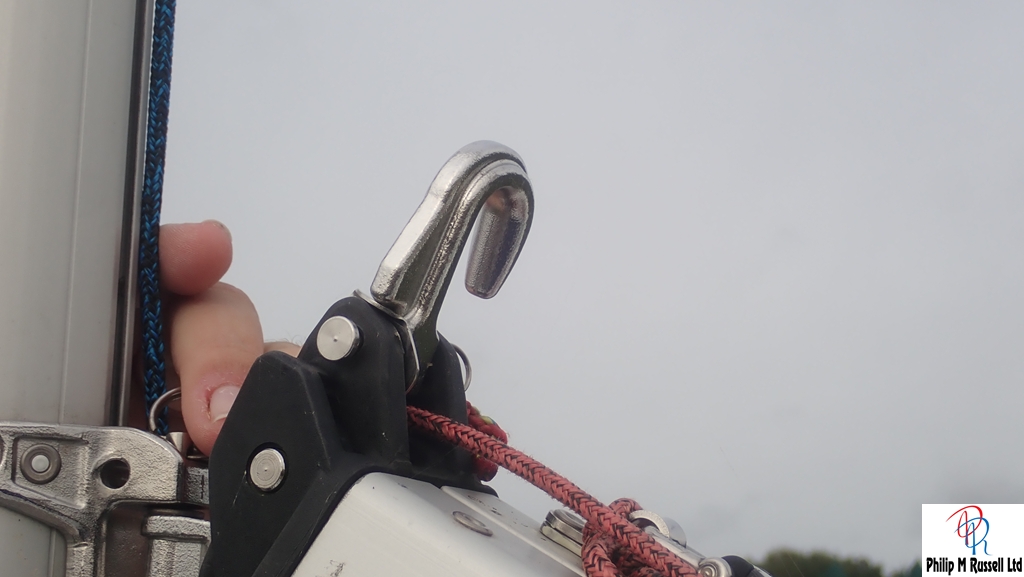Reefing Horn: A Hook at the Gooseneck Used to Secure the Sail When Reefing
Definition:
A reefing horn, also known as a ram’s horn, is a small double hook or pair of curved metal prongs located on either side of the gooseneck (the joint where the boom meets the mast). It is used to secure the luff cringle (the reinforced eyelet at the front of the sail) when reefing—reducing the sail area in strong winds.
Understanding the Reefing Horn
When reefing the mainsail, the sail is lowered partway so that the reef cringle on the luff aligns with the reefing horn. The cringle is then hooked over one of the horns, effectively creating a new tack for the shortened sail. Once secured, the halyard is re-tensioned to tighten the luff, and the reefing line at the leech (aft edge) is pulled down to complete the reef.
The reefing horn’s design allows this process to be done quickly and securely, often by one person, without the need for additional shackles or fittings.
Applications in Sailing
Reefing:
The reefing horn holds the front corner of the sail (luff cringle) at the new reefing point, anchoring it firmly to the boom.
Quick Sail Reduction:
Its open-hook design enables fast attachment and release—essential when the wind rises unexpectedly.
Safety:
By securing the luff of the reefed sail, the reefing horn prevents excessive strain on the sailcloth and ensures the boat remains balanced and under control.
Examples of Usage
"Hook the luff cringle over the reefing horn before tightening the halyard."
"The reefing horn jammed with an old piece of rope, and we couldn’t reef until it was cleared."
"The new gooseneck fitting came with stainless steel reefing horns—a big improvement over the old brass ones."
Visual Representation
Image Description:
Close-up illustration of the boom and mast connection. Two curved metal hooks (the reefing horns) extend outward from either side of the gooseneck. The luff cringle of the sail is shown hooked over one of the horns, with the halyard above and the reefing line at the leech pulling the back of the sail down to the boom.
Importance in Sailing
The reefing horn is a small but vital fitting in sail control. It allows sailors to reef quickly and safely, even in challenging weather. A properly engaged reefing horn:
Secures the new tack of the sail during reefing.
Prevents the sail from slipping down the mast.
Ensures even tension between luff and leech for good sail shape.
Without it, reefing would require extra fittings or knots—slowing the process and potentially increasing risk when conditions deteriorate.
Related Terms
Cringle:
A reinforced eyelet in the sail for attaching lines or hooks.
Gooseneck:
The hinged fitting connecting the boom to the mast.
Luff:
The forward edge of the sail, often containing the cringles for reefing.
Reefing Line:
The rope used to pull down and secure the leech cringle at the back of the sail.
Tack:
The forward lower corner of the sail, re-established at a new position when reefing.
Conclusion
The reefing horn may seem like a minor detail, but it’s indispensable for quick and efficient reefing. By securely holding the sail’s luff during heavy-weather sail reduction, it helps maintain control, sail shape, and safety. Knowing how to use the reefing horn properly is an essential skill for any sailor who wants to handle changing winds with confidence.
